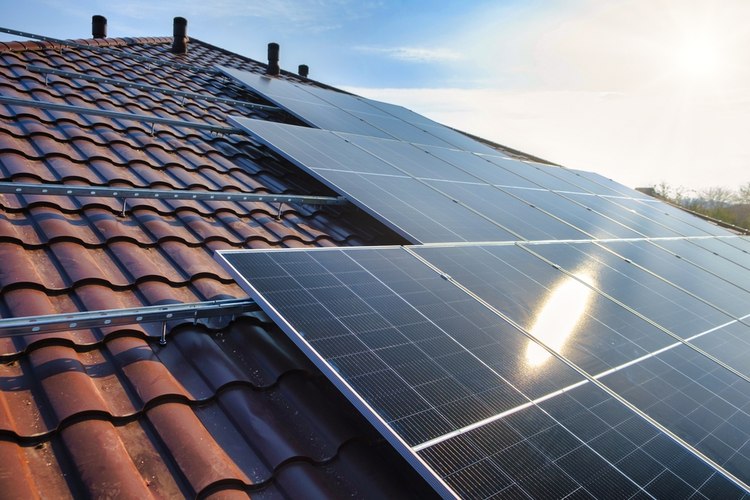HED: Solar panels for your home: how they work and why they pay off
Homeowners across the US are turning to solar panels as a smart long-term investment. With rising electricity costs, modern solar systems can significantly reduce monthly bills and, over time, often pay for themselves. Many households find that installing residential solar panels not only leads to savings but also increases home value and energy independence. In this article, we’ll explore how solar systems work, what makes them so efficient in 2025, and what kind of savings and incentives are available. Whether you're curious about going green or just want to lower expenses, this guide will help you decide if solar is right for you.

How do solar panels generate electricity for your home?
Solar panels work by converting sunlight into usable electricity through a process called the photovoltaic effect. When sunlight hits the solar cells within the panels, it excites electrons, creating an electric current. This direct current (DC) electricity is then converted to alternating current (AC) by an inverter, making it compatible with your home’s electrical system. The generated electricity can power your appliances and lighting, with any excess energy typically fed back into the grid or stored in batteries for later use.
What makes residential solar panels more efficient in 2025?
Advancements in solar technology have led to significant improvements in panel efficiency. In 2025, residential solar panels are expected to convert up to 22-25% of sunlight into electricity, compared to 15-18% just a few years ago. This increased efficiency means that fewer panels are needed to produce the same amount of energy, reducing installation costs and space requirements. Additionally, modern panels are more durable and weather-resistant, ensuring longer lifespans and better performance in various climatic conditions.
How much can homeowners save with solar energy?
The potential savings from solar panels can be substantial, varying based on factors such as location, energy consumption, and local electricity rates. On average, homeowners can expect to save between $10,000 and $30,000 over the lifetime of their solar system. In states with high electricity costs, such as California or Hawaii, savings can be even more significant. It’s important to note that while the initial investment may seem high, many homeowners see a return on investment within 7-10 years through reduced energy bills and available incentives.
What are the key benefits of installing solar panels for homeowners?
Installing solar panels offers numerous benefits beyond just saving money on electricity bills. Homeowners can enjoy increased energy independence, protection against rising utility costs, and a reduced carbon footprint. Solar installations often increase property values, making them an attractive feature for potential buyers. Additionally, many homeowners report a sense of pride and satisfaction in generating their own clean energy and contributing to a more sustainable future.
Are there any government incentives or tax credits available for solar installations?
The U.S. government and many states offer incentives to encourage the adoption of solar energy. As of 2025, the federal solar investment tax credit (ITC) allows homeowners to deduct 22% of the cost of installing a solar energy system from their federal taxes. Many states offer additional rebates, tax exemptions, and performance-based incentives. Some utility companies also provide net metering programs, allowing homeowners to earn credits for excess energy fed back into the grid. It’s essential to research local and state-specific incentives, as they can significantly reduce the overall cost of going solar.
How do the costs of solar panels compare to potential savings?
When considering solar panels, it’s crucial to weigh the upfront costs against long-term savings. Here’s a comparison of typical costs and savings for residential solar systems in the USA:
| System Size | Average Cost (Before Incentives) | Estimated Annual Savings | Payback Period | 25-Year Savings |
|---|---|---|---|---|
| 5 kW | $13,000 - $16,000 | $650 - $800 | 9-12 years | $20,000 - $25,000 |
| 10 kW | $24,000 - $30,000 | $1,300 - $1,600 | 8-11 years | $40,000 - $50,000 |
| 15 kW | $35,000 - $45,000 | $1,950 - $2,400 | 8-10 years | $60,000 - $75,000 |
Prices, rates, or cost estimates mentioned in this article are based on the latest available information but may change over time. Independent research is advised before making financial decisions.
The decision to invest in solar panels ultimately depends on your specific circumstances, including your home’s energy needs, location, and available roof space. While the initial investment can be significant, the long-term benefits often outweigh the costs for many homeowners. With increasing efficiency, decreasing installation costs, and generous incentives, solar panels are becoming an increasingly attractive option for homeowners looking to reduce their energy bills and environmental impact.
As we move towards a more sustainable future, residential solar panels represent a powerful tool for homeowners to take control of their energy consumption and costs. By understanding how solar systems work and carefully considering the potential savings and benefits, you can make an informed decision about whether solar power is the right choice for your home.




